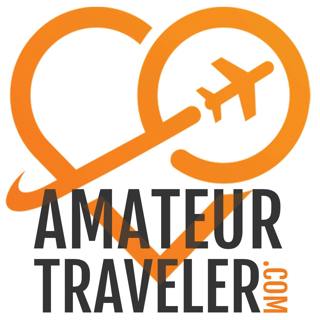Om avsnittet
Hear about travel to Hikone and Gifu in Central Japan as the Amateur Traveler talks to Miyuki Seguchi from the Japan Experts Podcast about he home region of Japan where she is a tour guide. Why should you visit Central Japan? Miyuki says, "A lot of travelers from North America or the West when they travel to Japan, they will stay in Japan for two to three weeks, and they usually travel from the eastern part of Japan to the western part of Japan or vice versa, but most of them do not stop off at the central region especially the southern part of Gifu to the eastern part of Shiga. So this part of Japan is simply not as well known as major tourist destinations, but there are a lot of places to visit, and these places are usually less busy and easy to access by public transport. If you want to explore some unique local areas with hidden gems that give you a great idea of authentic local life." The journey begins with a visit to Hikone, a city located in the Chubu region, home to the well-preserved Hikone Castle, one of Japan's five national treasure castles. Visitors can also enjoy a boat ride on the moat surrounding the castle and explore the beautiful gardens. Additionally, Miyuki recommends a boat trip to Chikubu Island on Lake Biwa to experience the coexistence of Shinto and Buddhism. Next, the itinerary takes travelers to Sekigahara, a town known for the historic Battle of Sekigahara which changed Japan's history. Here, they can visit the Battlefield Memorial Museum to learn about the battle. Moving west, the tour arrives in Gifu City, the largest city in Gifu Prefecture. A unique highlight here is the Ukai Cormorant Fishing, a tradition dating back over 1,300 years. This fishing method involves trained cormorant birds catching fish. The fishermen have an honorary position delivering fish to the Japanese imperial family. The Nagaragawa Ukai is famous for preserving this tradition, and visitors can experience it between May and October. There's also the opportunity to visit the Ukai Cormorant Fishing Museum for deeper insights into this cultural practice. Go out at night on a boat to watch this spectacle. For accommodations, staying in a traditional ryokan is recommended, where you can try the high-quality multi-course Japanese meal called kaiseki ryori. Don't miss the chance to visit a hot spring or onsen. The next day, explore the Kawaramachi district, a historic area with traditional merchant houses. The Nagaragawa River, one of Japan's cleanest rivers, has contributed to the development of craft-making, particularly Japanese paper called washi. Climb Mt. Kinka to get a panoramic view of the region, including the Japan Alps and the city of Nagoya. The summit can be reached by cable car or a one-hour hike. In the north of Gifu, you can explore Mino and Seki cities. Seki is renowned for its sword and knife-making tradition, offering the chance to witness skilled craftsmanship. Mino is also famous for its washi paper production, and you can visit the Washinary shop for various washi products. Overall, Gifu Prefecture offers a blend of traditional culture, scenic beauty, and unique experiences. If you travel between Tokyo and Kyoto, you will pass right by. show notes - https://amateurtraveler.com/travel-to-hikone-and-gifu-japan/ Learn more about your ad choices. Visit megaphone.fm/adchoices

